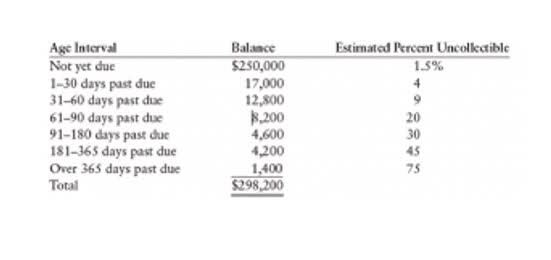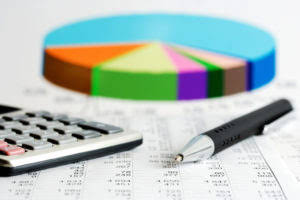These are listed on the bottom, because the owners are paid back second, only after all liabilities have been paid. The fundamental accounting equation, as mentioned earlier, states that total assets are equal to the sum of the total liabilities and total shareholders equity. The accounting equation succinctly shows how the net worth (equity) of a business is determined by the things it owns (assets) on the one hand, and by the debts it owes (liabilities) on the other. Again, separate these according to current and noncurrent liabilities. Combine your company’s earned and retained income to determine your total capital.
Video Explanation of the Balance Sheet
Explore our eight-week online course Financial Accounting—one of our online finance and accounting courses—to learn the key financial concepts you need to understand business performance and potential. A balance sheet provides a snapshot of a company’s financial performance at a given point in time. This financial statement is used both internally and externally to determine the so-called “book value” of the company, or its overall worth. A balance sheet is one of the primary statements used to determine the net worth of a company and get a quick overview of its financial health.
Financial statements
The balance sheet is one of the three main financial statements that depicts a company’s assets, liabilities, and equity sections at a specific point in time (i.e. a “snapshot”). The accounting equation states that a company’s assets must be equal to the sum of its liabilities and equity on the balance sheet, at all times. Equity is the sum of your total assets, including any income earned or saved in your accounts, minus the total of your debts. The equity definition can vary, whether it’s owner equity or shareholder equity.
Create a free account to unlock this Template
The accounting equation ensures that the balance sheet remains balanced. That is, each entry made on the debit side has a corresponding entry (or coverage) on the credit side. Balance sheets are one of the primary statements used to determine the net worth of a company and get a quick overview of it’s financial health. The ability to read and understand a balance sheet is a crucial skill for anyone involved in business, but it’s one that many people lack. Noncurrent or long-term liabilities include loans that’ll take you more than a year to pay off. These liabilities can consist of long-term loans, deferred tax liabilities or pension obligations.
How the Balance Sheet is Structured
In this example, the owner’s value in the assets is $100, representing the company’s equity. In accounting, the company’s total equity value is the sum of owners equity—the how to solicit reviews from your customers value of the assets contributed by the owner(s)—and the total income that the company earns and retains. Liabilities are obligations as a result of a past transaction.
Which three components make up the Accounting Equation?
It can be looked at on its own and in conjunction with other statements like the income statement and cash flow statement to get a full picture of a company’s health. Changes in balance sheet accounts are also used to calculate cash flow in the cash flow statement. For example, a positive change in plant, property, and equipment is equal to capital expenditure minus depreciation expense. If depreciation expense is known, capital expenditure can be calculated and included as a cash outflow under cash flow from investing in the cash flow statement. These may include loans, accounts payable, mortgages, deferred revenues, bond issues, warranties, and accrued expenses. Below liabilities on the balance sheet, you’ll find equity, the amount owed to the owners of the company.
As inventory (asset) has now been sold, it must be removed from the accounting records and a cost of sales (expense) figure recorded. The cost of this sale will be the cost of the 10 units of inventory sold which is $250 (10 units x $25). The difference between the $400 income and $250 cost of sales represents a profit of $150. The inventory (asset) will decrease by $250 and a cost of sale (expense) will be recorded. (Note that, as above, the adjustment to the inventory and cost of sales figures may be made at the year-end through an adjustment to the closing stock but has been illustrated below for completeness).
Because there are two or more accounts affected by every transaction carried out by a company, the accounting system is referred to as double-entry accounting. The shareholders’ equity number is a company’s total assets minus its total liabilities. It is a fundamental financial statement that provides a snapshot of your https://www.simple-accounting.org/ business’s financial position at a specific point in time. It offers valuable insights into your assets, liabilities, and equity, enabling you to assess the overall financial health and stability of your business. You can further break down your list of assets by determining which are current and which are noncurrent.
The basic accounting equation is fundamental to the double-entry accounting system common in bookkeeping wherein every financial transaction has equal and opposite effects in at least two different accounts. Equity refers to the owner’s value in an asset or group of assets. Equity is also referred to as net worth or capital and shareholders equity. However, an asset cannot be recorded because of the uncertainty of future benefits accruing from the salary expenditure. The balancing entry is a reduction in the equity of the shareholders. It is, in fact, an expense and all expenses reduce retained earnings which is part of the shareholder’s equity.
If the accounting equation is out of balance, that’s a sign that you’ve made a mistake in your accounting, and that you’ve lost track of some of your assets, liabilities, or equity. Accountants call this the accounting equation (also the “accounting formula,” or the “balance sheet equation”). Owner’s or stockholders’ equity also reports the amounts invested into the company by the owners plus the cumulative net income of the company that has not been withdrawn or distributed to the owners. Everything listed is an item that the company has control over and can use to run the business. This transaction affects only the assets of the equation; therefore there is no corresponding effect in liabilities or shareholder’s equity on the right side of the equation. For every transaction, both sides of this equation must have an equal net effect.
- Cash (asset) will reduce by $10 due to Anushka using the cash belonging to the business to pay for her own personal expense.
- For example, imagine that a business’s Total Assets increased by $500.
- Each entry on the debit side must have a corresponding entry on the credit side (and vice versa), which ensures the accounting equation remains true.
- These are some simple examples, but even the most complicated transactions can be recorded in a similar way.
In the accounting equation, every transaction will have a debit and credit entry, and the total debits (left side) will equal the total credits (right side). In other words, the accounting equation will always be “in balance”. This account includes the total amount of long-term debt (excluding the current portion, if that account is present under current liabilities). This account is derived from the debt schedule, which outlines all of the company’s outstanding debt, the interest expense, and the principal repayment for every period.
Assets will typically be presented as individual line items, such as the examples above. Then, current and fixed assets are subtotaled and finally totaled together. This is the total amount of net income the company decides to keep. Every period, a company may pay out dividends from its net income.
You can see how the book value (equity) of their business is based on known quantities like the value of assets and the size of debts. Assets equals liabilities plus equity is the foundational formula in accounting. It helps establish the net worth (and solvency) of a business. This also includes all of your liabilities such as bank loans, credit cards, and amounts you owe to other people (Accounts Payable).
For example, you can talk about a time you balanced the books for a friend or family member’s small business. They help you understand where that money is at any given point in time, and help ensure you haven’t made any mistakes recording your transactions. Assets, liabilities, equity and the accounting equation are the linchpin of your accounting system. Assets are anything valuable that your company owns, whether it’s equipment, land, buildings, or intellectual property. Therefore cash (asset) will reduce by $60 to pay the interest (expense) of $60. Required Explain how each of the above transactions impact the accounting equation and illustrate the cumulative effect that they have.
Following are the concepts that will equip you with the knowledge and understanding to effectively interpret and analyze the balance sheet. By examining this, you can assess your business’s liquidity, solvency, and financial stability. You’ll gain insights into the value of your assets, understand your liabilities and debts, and evaluate the equity position of your business. This information is invaluable for making informed financial decisions, attracting investors or lenders, and tracking the progress and growth of your business.







